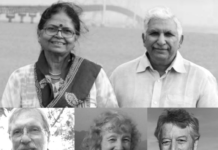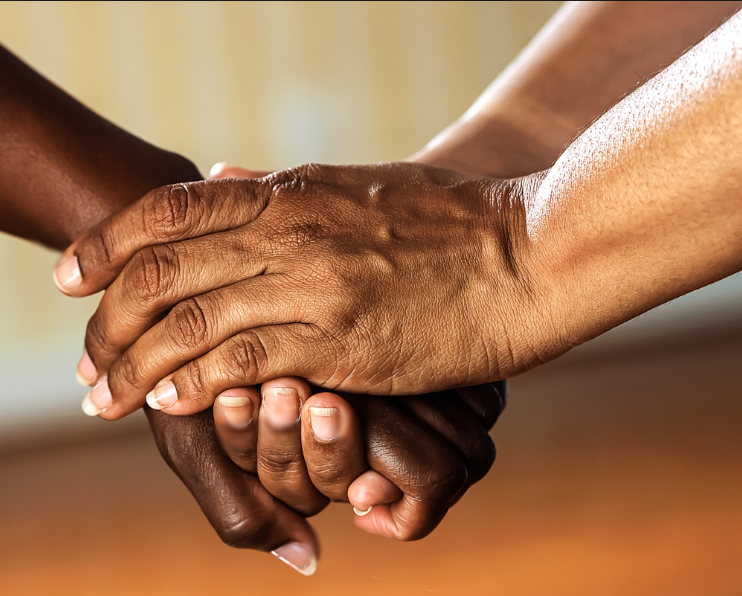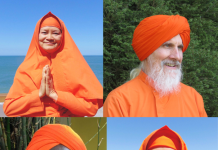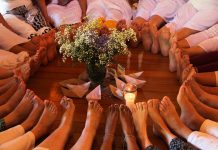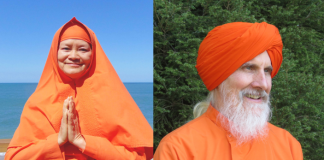At first glance, questioning the existence of black voices in Ananda Marga may seem irrelevant, since Ananda Marga proposes a universalist philosophy. However, the racism that occurs in society is reflected among the anandamargiis. On the one hand, Ananda Marga, as philosophy, is based on a universal spiritual ideal, founded on the diversity of manifestations of the Cosmic Consciousness, expressed in all beings, independent of color and race. On the other hand, the practical reality of the Ananda Marga community, that is, the institutions that transmit Ananda Marga’s philosophy to the world, and the people that are part of the community, can reproduce different aspects of racism that affect a large part of society (especially Western society).
In this third part of the “Universalism” series, Dharma for all Journal investigates whether there is an objective space in which the diversity proposed by Baba’s universalism can take place, considering the different worldviews. This research is extensive and could generate different responses, depending on what part of the world is being considered. For example, there is, of course, a majority of blacks in Ananda Marga in African countries – which does not mean that racism is not expressed in these countries either. In the meantime, we have focused the investigations in this report on two Western countries, where discussions on racism are currently very heated: Brazil and the US.
Amrta (Aruanã Garcia), bhukti pradhan from Rio de Janeiro’s jagrti, in Brazil, is part of a small part of the Brazilian black population that ascended socially. According to him, his family, militants in the black movement, “although not having much money, always had good education”. Amrta was carried away by his desire to practice “more spiritual meditation.” After attending two dharmacakras, he already felt that this was his place.
“When you are a black person, the first thing you think, when you are very young, is: what is wrong with me? Within the jagrti in Copacabana I never felt that way. I am already cautious when I go to these places. First, there were no blacks there, I would come and sit in a corner. ” He also says that ” racism turns you into a person prepared to face difficult situations, that the environment is going to be hostile to you, not because of your personality, whether you talk a lot or not, whether you are ugly or beautiful, but because of your color.” According to him, black people avoid going to various places, and his black friends even tell him: “How do you do this about meditation thing, it is related to white people?”. Amrit tells them that it is a universal culture, but apparently, we still have a long way to go.
Acarya Pavanananda Avadhuta, one of the acaryas from Africa working in Brazil, says that blacks, because they have been exploited for years, are more resistant to something new like the philosophy of Anandamurti. “I’m also thinking a lot about it, because we do not have many people like that in our organization,” he says. One of the possible factors, he tells us, is the low income of the black population, because once the energy of that population is turned to survival, there is no time for spiritual practices. “Baba says that one must first guarantee the basic necessities of life: education, housing, medicine, food, clothing. Only then will people have more time for spirituality.” For Revati (Regina Célia Silva, RJ, Brazil), although this issue is relevant, there is also a lack of receptivity. “I think that in order for anyone to remain in a group, the person must have something or someone to hold them there, to catch their attention! A sense of brotherhood is missing. Ananda Marga is an elitist institution and blacks are mostly poor. They do not feel comfortable. They do not feel like a real family.”
Onkarnath Deva (Eudes Cardozo, São Paulo) felt much Revati when attending Ananda Marga events. “This issue about social classes has always caught my attention,” he says. As one of the few black members of the community, he felt he was not being listened to by other members and that people drew conclusions as if they knew his reality. Revati believes that this inequality of conditions hinders coexistence: “There is no dialogue between a black margii who lives from selling handmade articles with the margii owner of a company. There will be respect, cooperation, union through ideology, but it is only there. The dadas and didis prioritize contact with elitist margiis. Blacks are welcome, but they do not feel welcomed. I do not see any effort to bring black people into the group.”
Racism, according to Geísa Mattos (Fortaleza, CE, Brazil), is not limited to individual attitudes such as phrases or gestures of discrimination. It is a structural issue, which, according to her, extrapolates the universe of Brazil and the United States. No wonder that in 2014 the “Black Lives Matter” movement emerged in the USA, while Anistia Internacional Brasil (Amnesty International Brazil, free translation) launched the “Jovem Negro Vivo” (Young Black alive) campaign.
Geísa studied in her post-doctorate the connections between the activism against police violence and racism, and discovered that in the twentieth century the skin color of the victims of violence in Brazil was not taken into account. “Two Brazilian sociologists (Jaime Alves and João Costa Vargas) denounce what they call “geographies of death”, the state violence that aims to exterminate this population in different ways. Not only because they are left to fend for themselves in terms of health, education, and neglect of various kinds, but because they are people who are going to die young.” Nowadays, it is known that in 77% of the homicides in this country the victims are black. Most of these cases involve young black men between the ages of 15 and 29. In Brazil, according to the last census of 2010, 51% of the population considers themselves to be black. In the US, it is 12.3% of the population, and even though they are a minority in that country, they are three times more susceptible to police violence.
In order to discuss a scenario where racism impacts anandamargiis, it is necessary to consider questions such as representativeness (proportion of black people in postions of power) and representation (what stories are told about blacks and their culture, and in what form). Anuragha (André Lucas, PR, Brazil) mentions, for example, the retreat in Ananda Daksina (Viamão, RS, Brazil), which took place in February 2018.
Among the hundreds of participants, he counted ten to fifteen people who, like him, are black. In addition, Revati (Regina Célia Silva, Rio de Janeiro), in a retreat a few years ago, felt resistance on the part of the dadas and didis to a samba presentation . In the meantime, in 2018 Anuragha realized “that cultural activities presented a great diversity of expression, in particular, what caught my attention was the reception with which the legacy of ancestrality and Afro-Brazilian culture was received, as expressed through music, poetry and dance in the different moments in which it was presented. There were contagious presentations that had in common elements of the African matrix. In another moment samba was evoked, involving everyone “.
In the view of
For Tarinii, neo-humanism, which would in principle neutralize the existence of racism, is not fully expression because it cannot coexist with capitalism. “Neo-humanism embodies much more equity. If anyone needs more, we adjust to the needs of the person and the people. I feel that in capitalism the needs do not come from the people. Capitalism supports those who have the money to make more money. It does not necessarily support people with few resources or people of color.” At the same time, she says she is “proud of all of us who can question even our own organization, because in this way we begin to evolve.”
“How to expand this world view? Will you be among the elite? Perception begins to change when we become aware of the privileges, that exclusion exists and that we were not aware of it. When you open your eyes, that’s the first step. We have to sometimes have our ear pulled, because we naturalize an exclusionary reality, “says Geísa Mattos. And in bringing diversity, according to her, we have to assume that conflicts will come and that it is necessary to have an open heart, because it is convenient to maintain a homogeneous group. “But then you enter into a reproductive perspective, reproduction like the capitalist society does. It reproduces knowledge, reproduces privileges only for whites, for the rich, and excludes an entire population. So if this knowledge (of Baba’s philosophy) is the most precious thing we have, if it is a revolutionary way to see the world, it has to be as inclusive as possible, and each margii must strive to find ways to be inclusive,” he concludes.
What are the ways to be more inclusive? For Revati, it is necessary to change the dynamics of dharma pracar of the anandamargiis, who today act in the periphery to provide services, but do not prioritize creation, from the periphery, of a group that interacts with the whole community. According to Geísa, it is important that white people invite black people to dialogue, and that this relationship involves listening and learning on both sides. Amrta believes it is important that everyone be close to the black community. Anuragha agrees and suggests that black leaders can attend one of the big annual retreats. For him, the spaces of coexistence, “beyond the fraternal socialization and the intense contact with the spiritual practices, are constructed in moments of high potential for the political organization of the movement, considering all the face-to-face meetings of margiis, acaryas, supporters and sympathizers. In this way it would be possible to set goals and targets for working together.”
By Jayanti (Joana Amaral)
Picture Shutterstock


